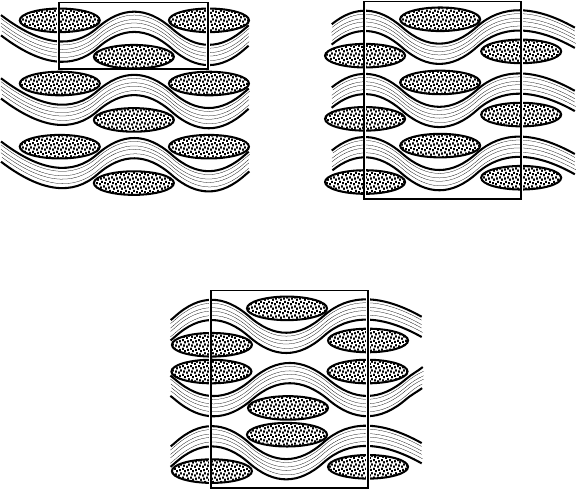
ANALYTICAL METHODS FOR TEXTILE COMPOSITES
SC.4190T.012295
(a) (b)
(c)
Figure 5-11. Choices of unit cell in quasi-laminar textile composites. (a) and (b):
two approaches to modeling laminate properties. (c): variant of whole thickness cell
in (b) for analyzing stacking effects.
The simplest unit cell approach is sometimes called the fiber inclination model
[5.18]. A related concept is the diagonal brick model [5.24]. In these models, only the
straight portions of the tows are represented; and the sole geometrical characteristic used
for each such segment is its angle of inclination to a global frame of reference. The
inclination angles may be contained in a single plane (especially for quasi-laminar textile
composites) or in all three spatial dimensions. Relatively simple closed-form expressions
are available for determining these angles from the weaving or braiding parameters
(Section 2.3). This approach was one of the first formulated specifically for textile
composites [5.18], but no codes implementing it have been included here.
In the next level of detail, tows and their cross-sections are represented as solid
entities with some simple geometry defined by just a few parameters. For example, a
plain weave may be modeled as a combination of straight yarn segments and cross-over
regions that follow an assumed sinusoidal path (Section 2.3). TEXCAD, CCM-TEX,
and PW are examples of codes that use this approach. SAWC uses a similar idealization
to generate a finite-element mesh. In the more complex textile preforms, tows must twist
and change cross-section with position as they pass around one another. Simple
